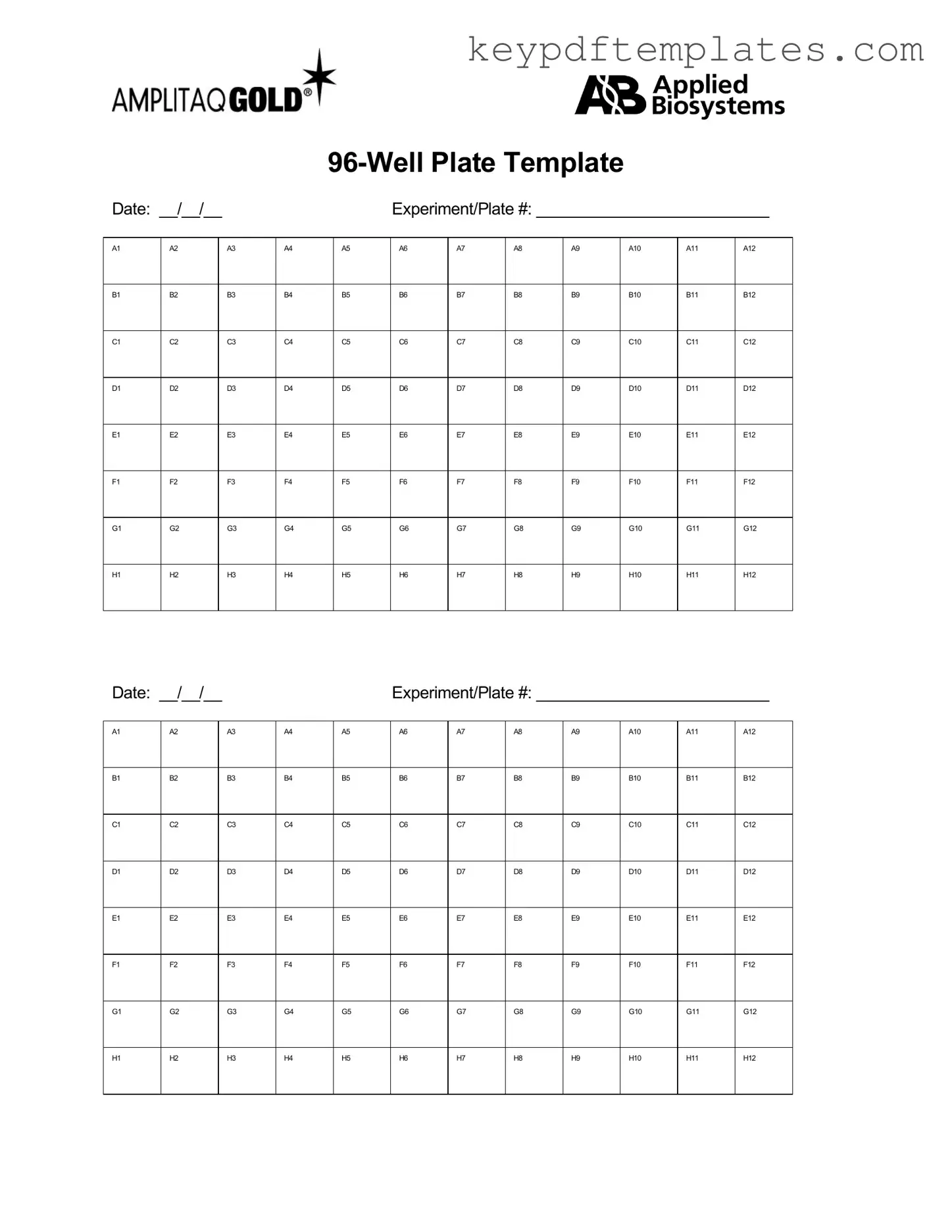Get 96 Well Form
The 96 Well form is a standardized template used primarily in laboratory settings for organizing and documenting experimental data across 96 sample wells. This format allows researchers to efficiently track results and manage samples in high-throughput screening processes. By utilizing this form, scientists can enhance the accuracy and reproducibility of their experiments.
Modify Document Online
